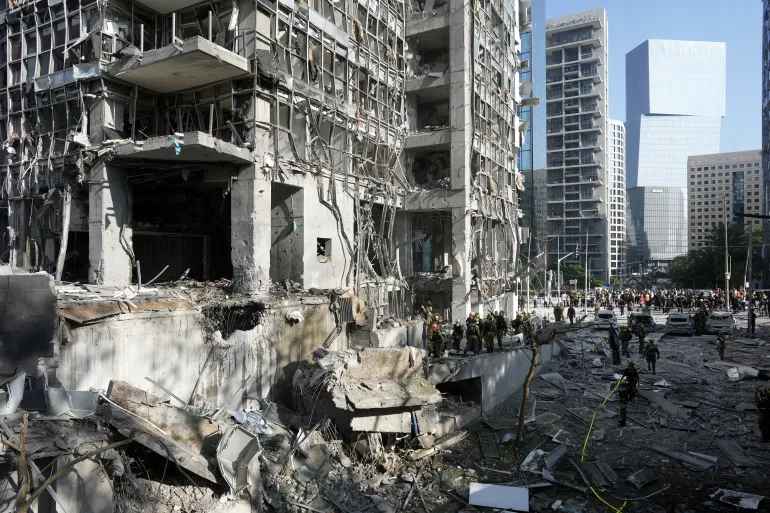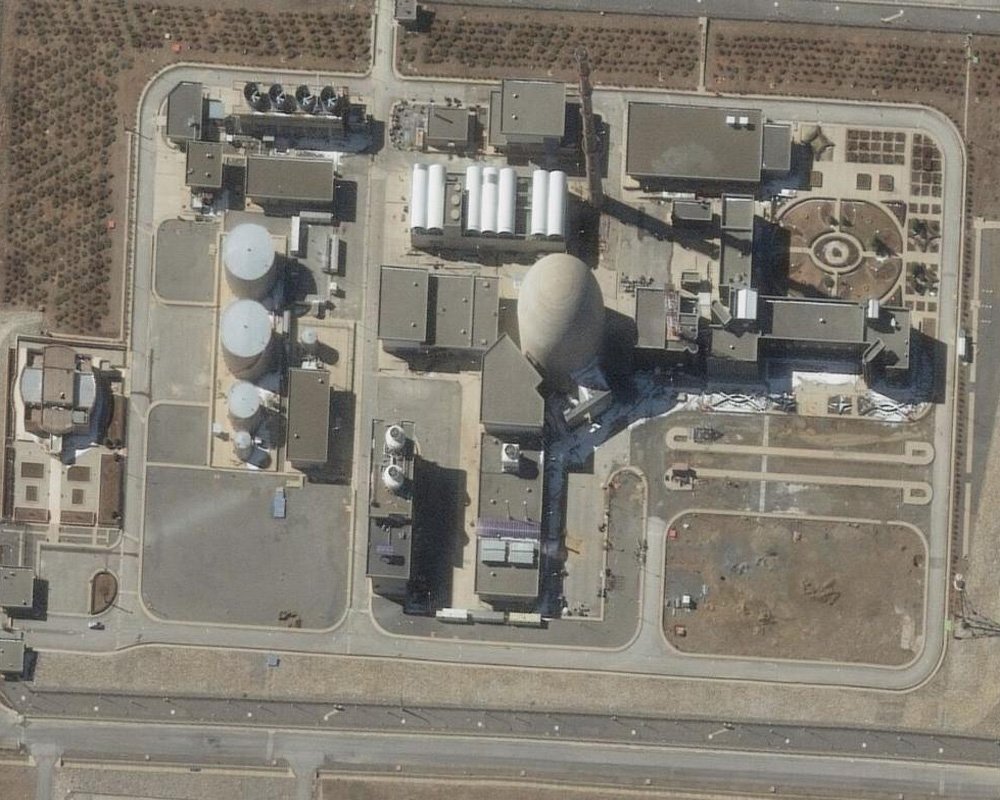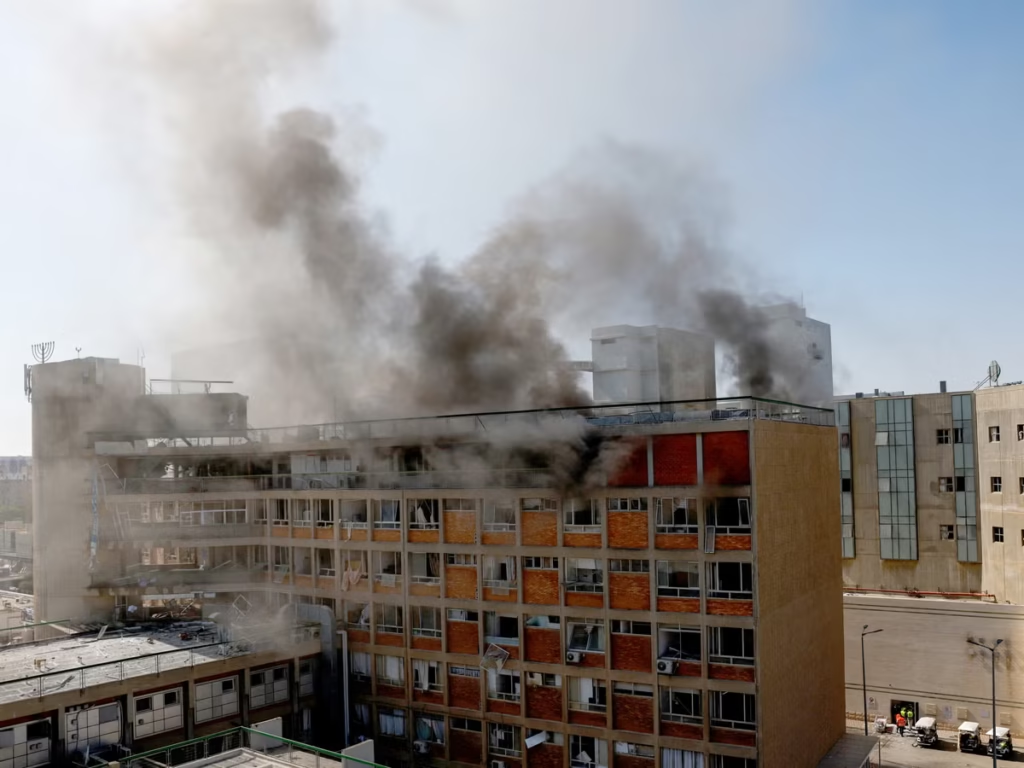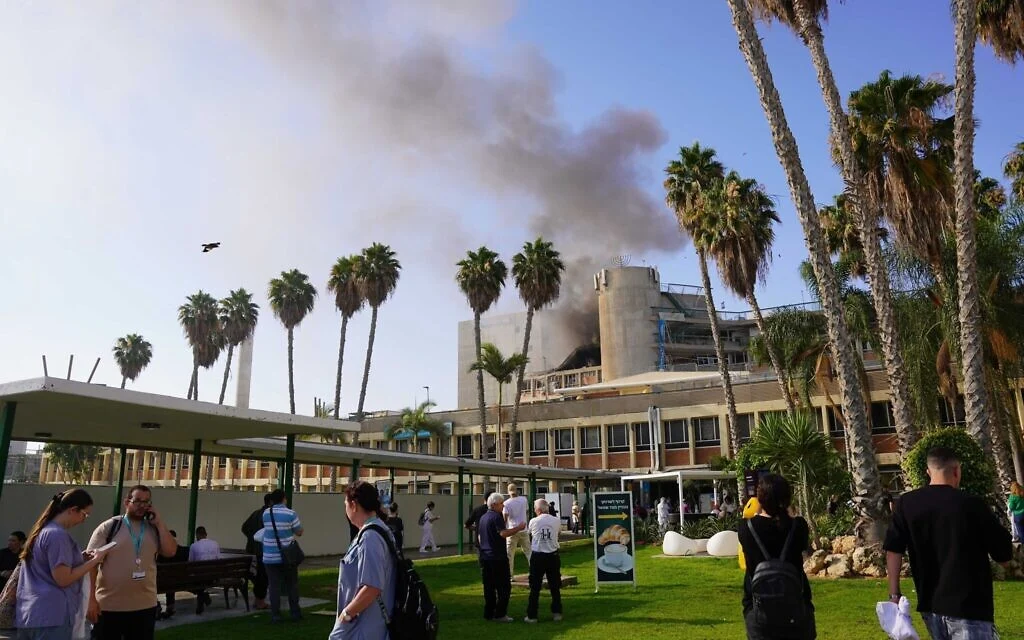A Rapidly Escalating Israel Iran Conflict

The Israel Iran conflict has escalated dramatically, with both nations engaging in direct strikes for a seventh straight day. This volatile standoff marks one of the most perilous moments in the region’s recent history. Israeli fighter jets carried out a targeted assault on Iran’s Khondab heavy water nuclear reactor, while Iranian missiles severely damaged Israel’s Soroka Medical Center. With strategic and civilian sites now under fire, the conflict has entered a dangerous new phase that threatens regional stability and humanitarian infrastructure alike.
Israel Iran Conflict: Israeli Warplanes Strike Nuclear Facilities
The Israel Iran conflict intensified further on Thursday as the Israeli military confirmed a targeted airstrike on Iran’s Khondab nuclear facility, formerly known as the Arak reactor. This marked a major escalation in the ongoing Israel Iran conflict, with Israeli forces aiming at the reactor’s core seal—an integral component for plutonium production. International observers have long regarded the site as a potential source of weapons-grade nuclear material, raising concerns over regional nuclear proliferation.
In response to the attack, Iranian officials evacuated the facility in advance, and state media reported no casualties or radiation leaks. However, Iran’s activation of air defenses near the Khondab site highlighted the country’s heightened alert status amid the worsening Israel Iran conflict.
Israel Iran Conflict: Iranian Missiles Hit Israeli Hospital
In a retaliatory strike, Iranian missiles hit multiple sites within Israel, with one striking the Soroka Medical Center in Beersheba. This hospital serves over a million people and is one of Israel’s largest medical facilities. According to medical officials, the hospital suffered extensive damage in several wings. The emergency department remained operational but limited its intake to life-threatening cases only.

Emergency crews reported injuries to at least 50 individuals across multiple cities, including Tel Aviv and the districts of Holon and Ramat Gan. Four of the injured remain in critical condition. The escalating crisis has overwhelmed emergency services, prompting hospitals nationwide to activate wartime protocols.
Israel Iran Conflict: Strategic Target or Civilian Collateral?
Iran maintains that its missile was targeting a nearby Israeli military command and intelligence facility located in the Gav-Yam Technology Park. This facility is adjacent to the Soroka Medical Center. Iranian reports suggest that the hospital suffered only indirect damage from the blast’s shockwave. Due to strict military censorship in Israel, official information about such sensitive facilities remains classified.
Israeli officials, however, have publicly condemned the attack as a war crime, emphasizing that striking a hospital violates international humanitarian laws. The Israeli leadership has vowed a strong retaliatory response, warning Iran of a “heavy price” for its actions.
The Wider Toll: Civilian and Military Casualties
The Iranian Human Rights Council based in Washington, D.C. reported that over 630 people have been killed in Iran over the past week due to Israeli airstrikes, including 263 civilians. More than 1,300 others have sustained injuries. On the Israeli side, Iran has launched over 400 missiles and hundreds of drones, resulting in at least 24 deaths and hundreds of injuries.

As the violence spreads, civilian infrastructure—residential areas, medical centers, and energy facilities—are increasingly becoming part of the battlefield. This alarming trend is raising concerns among humanitarian organizations and international observers.
Nuclear Dangers and Environmental Risks
Targeting a nuclear facility, even one that is partially decommissioned or restructured like Khondab, raises significant environmental and geopolitical concerns. While Iran claims there is no radiation risk, military experts warn that such strikes could have catastrophic consequences if containment measures fail.
Experts also note that the strike may have implications for nuclear non-proliferation efforts. Damaging nuclear infrastructure sets a precedent that could destabilize future diplomatic negotiations or efforts to revive previous nuclear agreements.
Military Tactics and Civilian Shielding
Some analysts argue that the placement of military installations near civilian infrastructure complicates modern warfare. Urban combat zones, where military assets are embedded within cities, increase the likelihood of civilian casualties and make proportional response difficult.
Critics say that both sides must take greater responsibility to avoid unnecessary harm to non-combatants. With both Iranian and Israeli officials accusing each other of using civilians as shields, the reality remains that civilians are bearing the brunt of the conflict.
Call for International Intervention
International organizations, including the United Nations, have called for an immediate ceasefire. Diplomatic channels have opened between neutral countries seeking to de-escalate the situation, though little progress has been made. The United States and European Union have both urged restraint and warned of regional destabilization.

The Iranian Supreme Leader, meanwhile, dismissed U.S. appeals for a ceasefire, stating that any American intervention would result in “irreparable damage” to its forces. This further complicates potential negotiations.
Strategic Fallout and Future Projections
The ongoing strikes indicate a shift from covert cyber warfare and proxy engagements to direct state-on-state conflict. With civilian targets now included in the crossfire, the humanitarian and geopolitical implications are enormous.
If these attacks continue, the conflict could draw in neighboring countries or spark broader regional warfare. The targeting of nuclear facilities and hospitals has already sparked international alarm. Without swift and coordinated diplomatic efforts, the region may face long-term instability and irreversible damage.
A Perilous Path Forward
This week’s exchange of attacks between Israel and Iran marks a turning point in an already volatile region. The targeting of the Khondab nuclear reactor and Soroka Medical Center suggests that the lines once drawn between military and civilian targets are beginning to blur.

The international community must act quickly to mediate before the conflict results in further humanitarian catastrophes or sparks a broader war. As the world watches, the need for de-escalation has never been more urgent.




